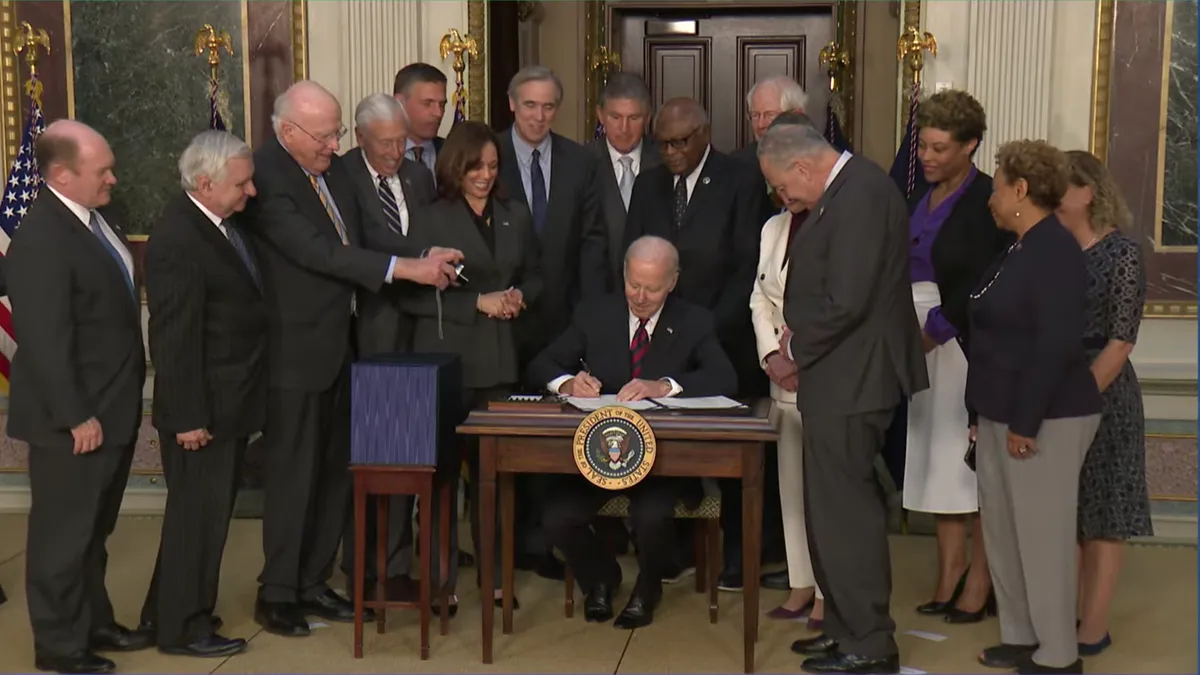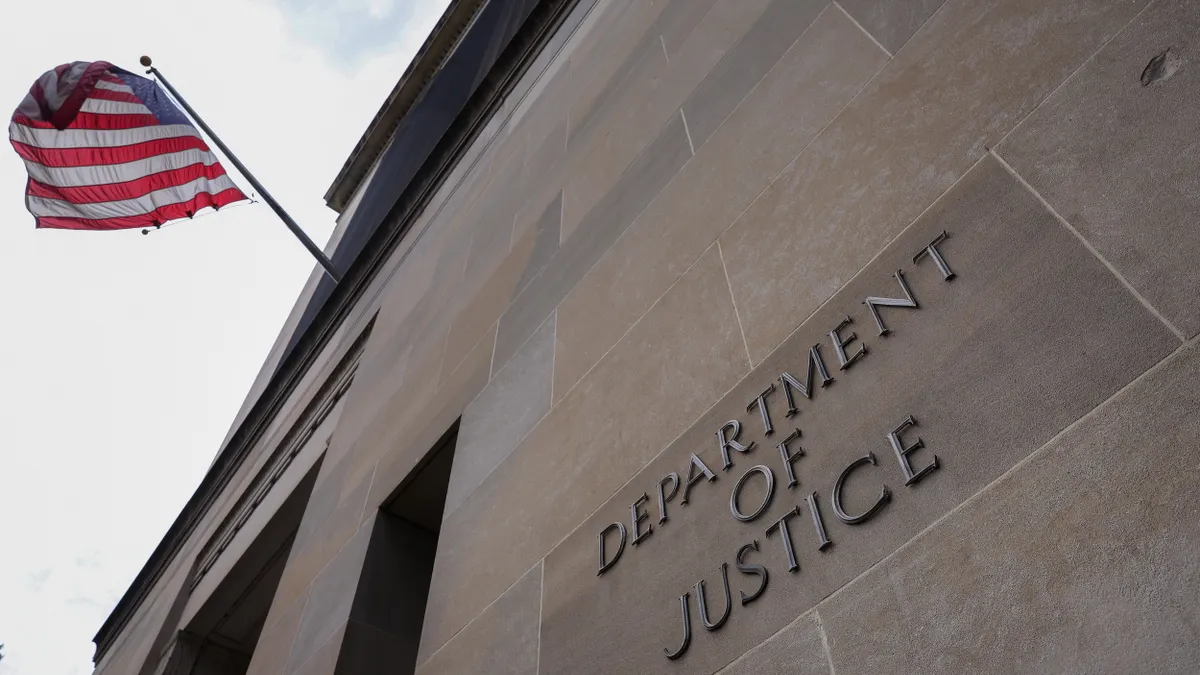President Joe Biden on Tuesday signed into law appropriations for fiscal year 2022, providing $76.4 billion for the U.S. Department of Education, the largest increase for federal education programs in a decade.
"The bipartisan package makes important strides to meet the needs of the whole child, to support effective teaching and learning, and to strengthen the pipeline for underrepresented teachers," said U.S. Secretary of Education Miguel Cardona in a statement.
Still, education policy experts and advocates — who thought the COVID-19 pandemic and subsequent federal aid posed an opportunity ripe for sustained increases — have expressed disappointment in funding for some programs, especially compared to the large proposals from the president.
"We can say something's good and still say it's not good enough," said Noelle Ellerson Ng, associate executive director for advocacy and governance for AASA, the School Superintendents Association. "But the thing that makes it even harder is this is probably one of the last shots at getting a sizable increase" in funding.
Here are six charts to break down what the omnibus bill means for education in fiscal 2022, which runs from Oct. 1, 2021 through Sept. 30, 2022.
Discretionary spending compared to pre-pandemic levels
The total discretionary spending for the Ed Department in FY2022 is a $2.9 billion increase from 2021 enacted levels, the steepest incline in fiscal year funding since the start of the pandemic.
The omnibus bill includes approximately $42.6 billion for K-12 and Individuals with Disabilities Education Act programs, according to a Democratic aide. That's an increase of $2 billion over fiscal 2021, marking the largest increase to K-12 and IDEA overall in over 15 years
Office of Elementary and Secondary Education spending
In FY 2022, some programs got larger pieces of the spending pie than in previous years. Safe Schools and Citizenship Education, which includes funds for school-based mental health services and full-service community schools, received $361 million in 2022 compared to $217 million in 2021.
This is still markedly less than Biden's request, which included over $1.5 billion for that purpose.
Biden's education budget requests vs. congressional allocations
Many of Biden's sizable proposals for key programs that would have helped in the recovery from COVID-19, like $15.5 billion in IDEA funding for states and nearly $12 billion for Head Start, got lowballed.
On the other hand, smaller-scale programs where Biden either did not request an increase or sought only a small bump in funding were granted increases. Where Biden requested $378 million in state assessments, for example, Congress provided $390 million. Education for homeless children and youth, for which Biden didn't request an increase at all, also received a small bump to $114 million, compared to $106.5 million previously.
Requested programs that Congress cut
There were also a few proposals Congress passed over entirely, including some that could have addressed major COVID-19 recovery concerns from districts.
The School Leader Recruitment and Support grant, for example, would have received $30 million had Congress fulfilled Biden's request to help districts curb high turnover among school leaders. And a proposed $25 million for Climate Resilient Schools would have supported both rural and urban schools that, while trying to reopen from COVID-19, often had a more difficult time meeting health and safety requirements due to poor infrastructure.
The largest blow, however, was to Title I, from which Congress cut a $20 billion Equity Grant proposal that would have supported desegregating schools and bumped total Title I spending to over $37 billion.
Funding for major programs increased over time
The relatively smaller boosts provided to key programs still landed them at higher funding levels when compared to pre-pandemic times. However, a 4% increase in IDEA Part B since 2019 and 15% increase to Title I, for example, might not be enough for districts to achieve the "transformational change" around equity that Cardona has called for.
"Secretary Cardona has rightly noted that we cannot go back to the way things were before the pandemic," said Mike Magee, CEO of Chiefs for Change, in an email. "This moment underscores the need for big changes in education so that we serve all students well – including children of color, those from low-income families, English language learners, students with disabilities, and those who were already behind in their learning."
In a statement, Cardona, who advocated for higher levels of funding alongside the president, admitted the Title I funds approved were "a down payment on President Biden’s commitment" to bridging equity gaps.
Lower funding levels suggest funding cliff
Significant change could be especially difficult considering some programs, including IDEA, will meet a funding cliff based on 2022 levels. "This omnibus was the first time in my career at AASA that Congress had a true opportunity to redirect itself forward on the IDEA glidepath," said Dan Domenech, executive director of AASA, in a statement.
However, while 2021 and ARP levels combined provided IDEA Part B with $15.5 billion, the 2022 bill will only provide $13.3 billion. That difference will make it difficult for districts to address things like steep teacher shortages in special education, which are long-term financial commitments.
You can't hire staff with one-time funding, Ellerson Ng said. "So all these things — the supports and services that districts might want to put into place — districts no longer will, because the IDEA dollars are going away."



















